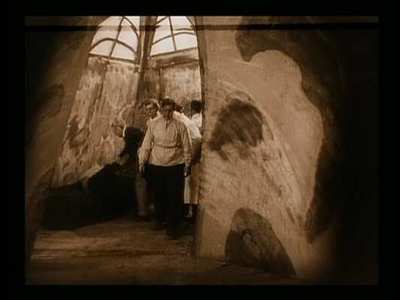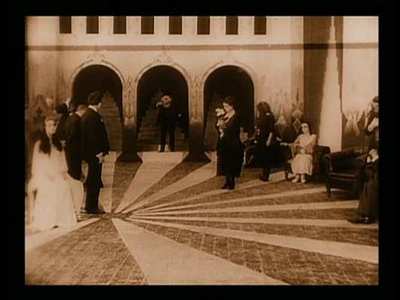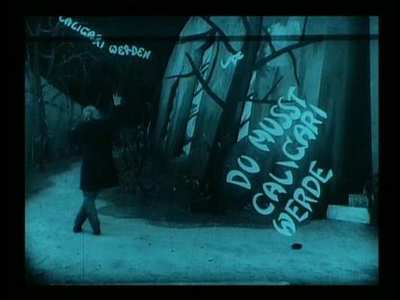Review of Das Cabinet Des Dr Caligari
Introduction
Widely considered the first major film of the German Expressionist era, Das Cabinet des Dr. Caligari (`The Cabinet of Dr. Caligari`, 1919) and its mise-en-scène in particular is discussed in almost every text concerned with film art or history. In the years during and immediately after World War I, Germany was subject to an embargo whereby American, British, French and Russian films could not enter the country. They therefore developed film styles of their own, unaware of the likes of Eisenstein and Griffith - `Caligari` and the works of other expressionist directors are the product of this isolation.
Carl Meyer and Hans Janowitz, damaged by their wartime experiences, wrote a story about Cesare, a somnambulist kept in a coffin-like cabinet and controlled by Dr. Caligari, who uses him as a fairground attraction and an assassin. A young man, Francis, becomes suspicious of Caligari and, whilst he is spying on him, Cesare kidnaps Francis` friend, Jane but is chased by the police and dies of exhaustion. Caligari, who had a dummy of Cesare in the cabinet whilst the somnambulist was away, is questioned by the police but flees and is pursued by Francis and the police to an asylum, where they make a shocking discovery.
`The Cabinet of Dr. Caligari` combined a story of madness, death and disorder with ground-breaking visuals to produce this landmark film, which influences filmmakers to this day.

Video
Director Robert Wiene employed Expressionist artists Herrmann Warm, Walter Röhrig and Walter Reimann to design the sets and the result was the fantastic environment which is such a major feature of the film, with its dark, gothic alleyways and geometrically bizarre doors, windows and chimneys.
When the film was first released, `The Cabinet of Dr. Caligari` had blue and sepia colour tints applied, with sepia for the daytime scenes and a steely-blue for night time. A few scenes have even had a purple wash applied, adding to the overall visual strangeness. The colour tints are replicated here, along with intertitles that are faithful to those on the original print.

Audio
The Dolby Digital 2.0 Stereo orchestral score by Timothy Brock is very good and atmospheric.

Features
The commentary, by film historian Mike Budd, is a dry and academic audio essay full of information and perfect for a DVD of this type.
Photos, advertising and art comprises six images, such as a photo of the theatre where the film premiered and some newspaper articles which, aside from the headlines, are too small to read.
The `Genuine` (Tale Of A Vampire) featurette is two minutes of extracts from this Robert Weine film. There`s little to glean from it and it`s a shame they didn`t include the whole thing.

Conclusion
`The Cabinet of Dr. Caligari` is a great film and has lasted surprisingly well, being far more watchable than you`d expect from a 90 year old film. Werner Krauss is excellent as the sinister Doctor Caligari, with Conrad Veidt (perhaps best known as Major Strasser in `Casablanca`) putting on a wonderful physical performance as the somnambulist assassin.
The look of `The Cabinet of Dr. Caligari` permeated not only the Universal horrors, but also the classic films noirs of the 1940s and `50s as well as contemporary films like `Edward Scissorhands` and `The Crow` - the style of Tim Burton`s films owe a lot to `Caligari` and other films of that era.
This is a wonderful presentation of the classic film that should be seen by anyone with an interest in cinema history.
Your Opinions and Comments
Be the first to post a comment!